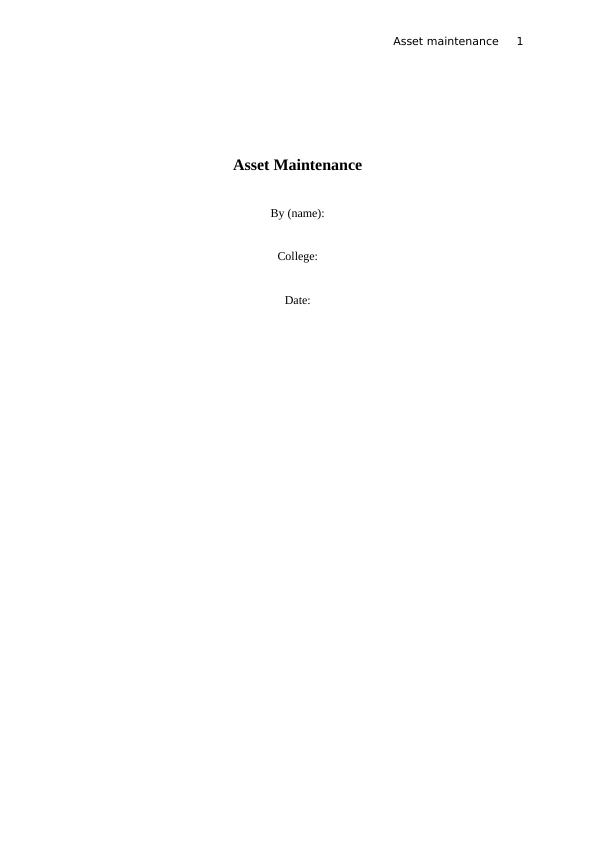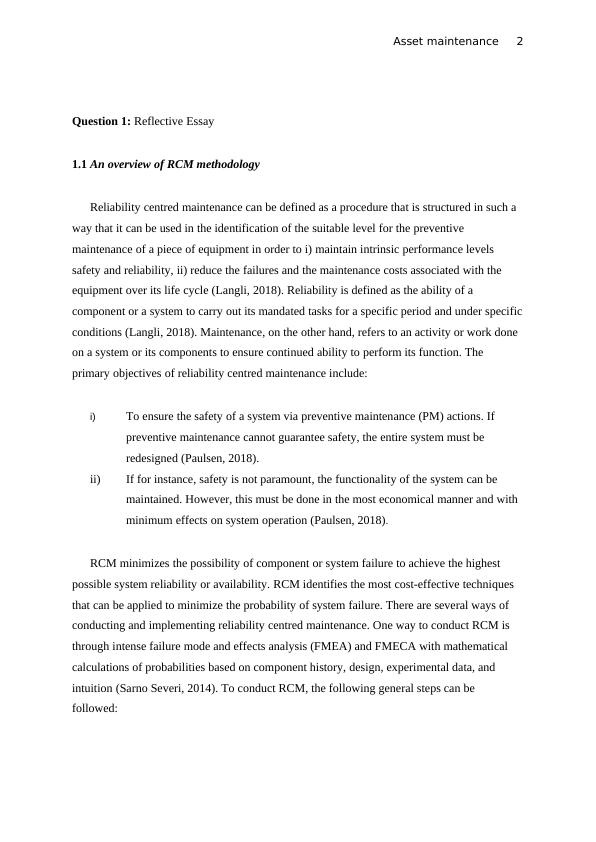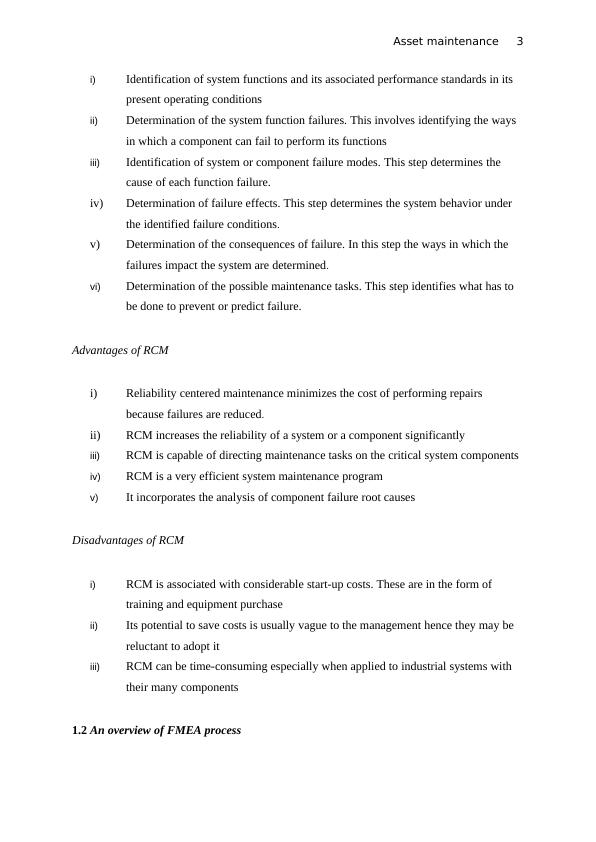RCM Methodology Reliability
Provide an overview of RCM methodology, identify the benefits and limitations of this process. Provide an overview of FMEA process, identify its benefits and limitations.
14 Pages3194 Words84 Views
Added on 2022-09-14
RCM Methodology Reliability
Provide an overview of RCM methodology, identify the benefits and limitations of this process. Provide an overview of FMEA process, identify its benefits and limitations.
Added on 2022-09-14
ShareRelated Documents
End of preview
Want to access all the pages? Upload your documents or become a member.
Asset Management - Question and Answer
|7
|3315
|10
The final step involves the evaluation of the worth
|6
|3250
|23
An overview of RCM and FMEA
|7
|3530
|23
The program thus focusses on the system
|7
|3308
|17
Reliability Centred Maintenance: Principles, Analysis, and Advantages
|21
|1406
|27
Assignment on Shortcut RCM Methods and PM Optimization
|17
|546
|18




